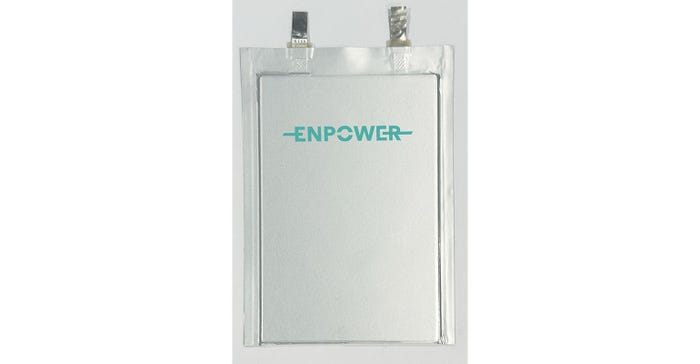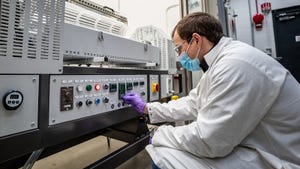Enpower's Energy-Dense All-Solid-State Battery Is Ready to Fly
Enpower Greentech successfully demonstrates a lithium metal all-solid-state battery with 300Wh/kg specific energy density, suitable for EVs and aerial vehicles and ready for mass production.

Solid-state batteries (SSBs) offer paramount advantages and are important for energy storage. They are notably safer, eliminating flammable liquid electrolytes, critical for applications like electric vehicles (EVs). Additionally, they provide higher energy density, longer lifespan, and robust performance in extreme conditions, enhancing the efficiency and reliability of various devices. Furthermore, their eco-friendliness by reducing reliance on rare materials makes them pivotal in advancing sustainable energy solutions.
What are all-solid-state- batteries?
On the other hand, all-solid-state batteries (ASSB) are constructed entirely from solid materials, encompassing every internal component, including a solid electrolyte for ion conduction. Batteries with minimal liquid components might not meet the criteria for being termed "ASSB" and could instead be categorized as SSB, quasi-solid-state batteries, or semi-solid-state batteries. When evaluating SSB compared to ASSB, the latter promises broader operating temperature and voltage ranges, enhanced durability, and power output.
ASSB breakthrough by Enpower
Enpower Greentech Inc.(EGI)— developer of advanced battery solutions for today's applications and tomorrow's all-solid-state batteries—has achieved another breakthrough in all-solid-state batteries (ASSB). This new ASSB is designed to provide ultra-safe, lightweight (energy-dense) batteries for EVs and aerial vehicles with 300Wh/kg energy.

“Today, we celebrate another success in this core technology that reduces interface resistance between the cathode and solid electrolyte layer while reducing the weight ratio of the solid electrolyte,” said Dr. Che Yong, Co-founder and CTO at EGI. “These reductions equate to 300Wh/kg specific energy density for the ASSB cell when coupled with EGI's proprietary lithium metal anode.”
Dr. Che explains, “The reason many have struggled to make major breakthroughs in ASSB technology can be understood by the challenges of constructing stable solid-to-solid interfaces using the right materials and processes. A solid electrolyte must form a secure and stable bond to the active materials while maintaining ionic and electric conductive paths in the cathode—a task which is far easier using liquid electrolytes.” Further, he explains, “There is also the challenge of interface resistance for ion conductivity. Increased resistance can reduce battery capacity, power output, and cycle life. Most solid electrolytes have a higher specific gravity weight than liquid electrolytes and, in turn, increase the battery mass (which reduces specific energy).”
According to IDTechEX's report "Solid-State and Polymer Batteries 2023-2033: Technology, Forecasts, Players", the primary driver of market demand for solid-state batteries originates from EVs, yet energy storage systems and consumer electronics like smartphones, tablets, and laptops are also in their crosshairs, and the latter may see adoption sooner. Also, an $8B market-size opportunity is potentially waiting for solid-state batteries.

About the Author(s)
You May Also Like





